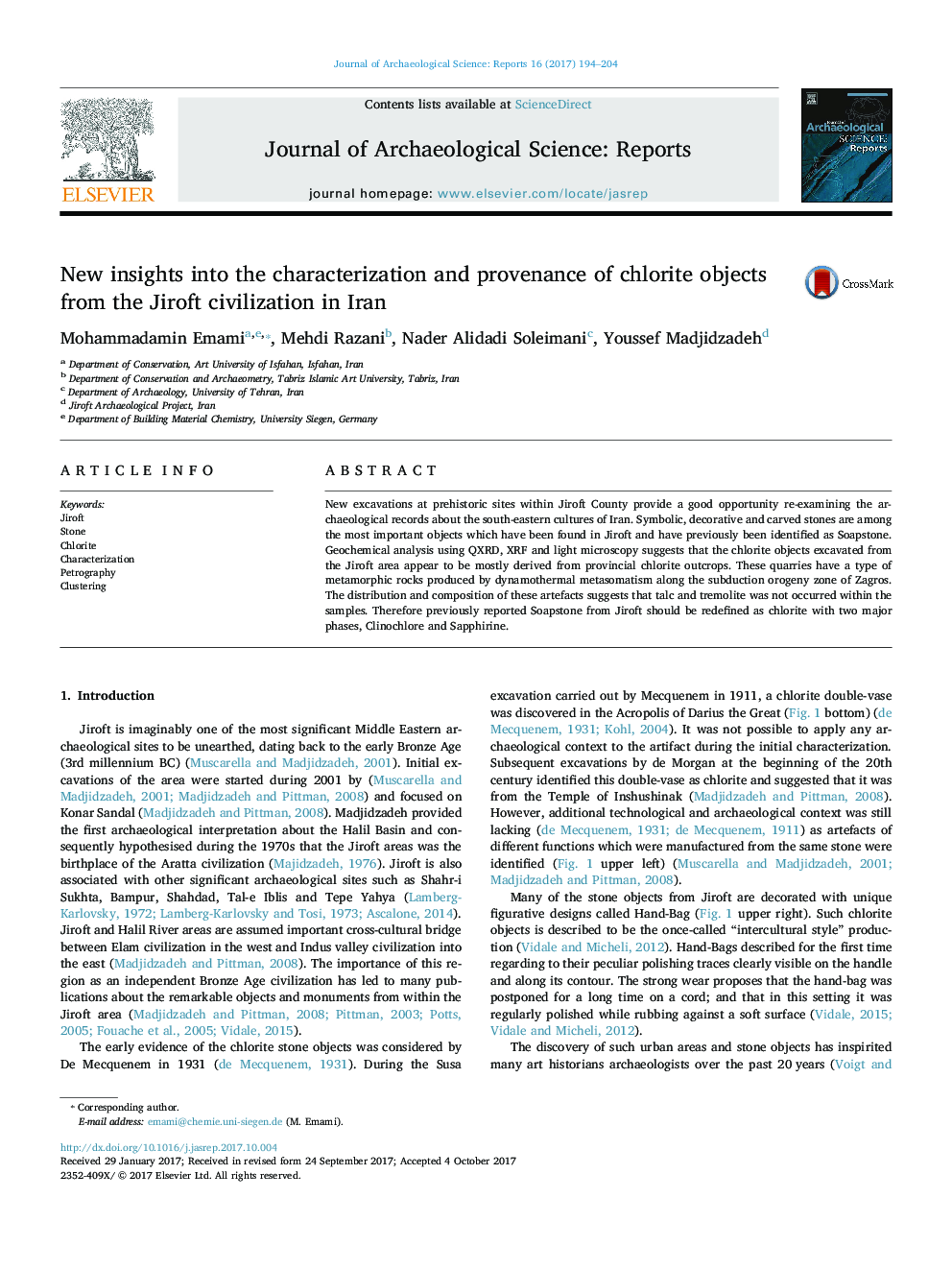| Article ID | Journal | Published Year | Pages | File Type |
|---|---|---|---|---|
| 5112162 | Journal of Archaeological Science: Reports | 2017 | 11 Pages |
Abstract
New excavations at prehistoric sites within Jiroft County provide a good opportunity re-examining the archaeological records about the south-eastern cultures of Iran. Symbolic, decorative and carved stones are among the most important objects which have been found in Jiroft and have previously been identified as Soapstone. Geochemical analysis using QXRD, XRF and light microscopy suggests that the chlorite objects excavated from the Jiroft area appear to be mostly derived from provincial chlorite outcrops. These quarries have a type of metamorphic rocks produced by dynamothermal metasomatism along the subduction orogeny zone of Zagros. The distribution and composition of these artefacts suggests that talc and tremolite was not occurred within the samples. Therefore previously reported Soapstone from Jiroft should be redefined as chlorite with two major phases, Clinochlore and Sapphirine.
Related Topics
Social Sciences and Humanities
Arts and Humanities
History
Authors
Mohammadamin Emami, Mehdi Razani, Nader Alidadi Soleimani, Youssef Madjidzadeh,
